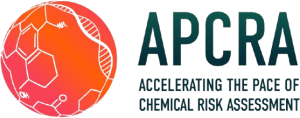Overall goal/objectives:
The overall goal of this case study is to test the hypothesis that concentration-response modeling of whole organism transcriptomic response following a 24 h exposure to larval fathead minnows (24-48 h post-hatch) can provide point of departure estimates that are protective, but not overly conservative, relative to acute and chronic toxicity measured in traditional ecotoxicity test with intact aquatic organisms. To date, 25 chemicals at 8-12 concentrations with 5-8 replicate individuals per concentration. Pathway-agnostic transcriptomics-based points of departure (tPODs) were calculated for first 10 compounds based on both median and 10th centile of the benchmark dose (BMD) distribution and a random in silico subsampling method used to generate uncertainty estimates for each tPOD. Compared chronic points of departure derived from the ECOTOX knowledgebase, tPODs were always lower than the lower quartile of literature-based PODs, but in a number of cases were three or more orders of magnitude lower. Highly conservative tPODs were generally associated with relatively few differentially expressed genes for which benchmark dose estimates could be derived and high variability based on in silico sub-sampling. Results highlight the need to develop a set of assay acceptance criteria indicative of a reliable and reproducible tPOD estimate. Results also suggest that pooling of more individuals per replicate, with potentially fewer replicates per treatment is likely a better strategy for tPOD derivation than increasing the sample size at each concentration.
Case Study Leader:
US EPA (Dan Villeneuve)
Collaborators:
US EPA (ORD, OPP), ECCC
Status: Completed
- Exposures completed and tPODs calculated for 22 chemicals in 7 different mode of action classes.
- Publication related to the second 12 chemicals submitted – under review.
Presentations or publications that have been publicly released:
- Villeneuve DL, Le M, Hazemi M, Biales A, Bencic DC, Bush K, Flick R, Martinson J, Morshead M, Rodriguez KS, Vitense K, Flynn K. Pilot testing and optimization of a larval fathead minnow high throughput transcriptomics assay. Curr Res Toxicol. 2022 Dec 22;4:100099. doi: 10.1016/j.crtox.2022.100099. PMID: 36619288; PMCID: PMC9816907. https://pubmed.ncbi.nlm.nih.gov/36619288/
- High Throughput Exposure Methods to Support the Derivation of Transcriptomics-Based Points of Departure for Common Aquatic Toxicity Test Organisms Kevin Flynn1, David Bencic1, Adam Biales1, Robert Flick1, Michelle Le2, John Martinson1 and Daniel Villeneuve1, (1)U.S. Environmental Protection Agency, United States, (2)Oak Ridge Institute of Science Education, United States; SETAC North America 41st Annual meeting (SETAC SciCon2) November 15-19, 2020.
- Effects of Volume on Acute Toxicity and the Transcriptome in Fathead Minnow Exposures Michelle Le1, David Bencic2, Adam Biales2, Robert Flick2, John Martinson2, Daniel Villeneuve2 and Kevin Flynn2, (1)Oak Ridge Institute of Science Education, United States, (2)U.S. Environmental Protection Agency; SETAC North America 41st Annual meeting (SETAC SciCon2) November 15-19, 2020.
- High Throughput Transcriptomics: A Multi-Species Approach. Kevin Flynn1, Adam Biales1, David Bencic1, Robert Flick1, John Martinson1, Dan Villeneuve1, Kathleen Jensen1, Jenna Cavallin1, Russell Hockett1, Teresa Norberg-King1, Joshua Harrill1, Logan Everett1, Michelle Le3, Kelvin Santana-Rodriguez3, Kendra Bush3, and Monique Hazemi3, (1) U.S. Environmental Protection Agency, United States, (2) Oak Ridge Institute of Science Education, United States; Meeting of EPA’s Board of Scientific Counselors, February 2, 2021
- Comparison of Apical Points of Departure to Transcriptomic Points of Departure in Fathead Minnow Exposures. Michelle Le1, Kevin Flynn2, Kendra Bush1, Kelvin Santana-Rodriguez1, Monique Hazemi1, Dan Villeneuve2. (1)Oak Ridge Institute for Science and Education, US EPA, Great Lakes Toxicology and Ecology Division, Duluth, MN. (2) 2US EPA, Great Lakes Toxicology and Ecology Division, Duluth, MN. SETAC North America, 42nd Annual meeting. 14-21, November 2021.
- Determination of Chemical Partitioning in in Vivo Aquatic High-Throughput Assays. E. Stacy2, B. Blackwell1, K. Bush2, K. Flynn1, S. Lasee2, M. Le2, M. Morshead2, D. Villenueve1. (1) US EPA, Great Lakes Toxicology and Ecology Division, Duluth, MN; (2) Oak Ridge Institute for Science and Education, US EPA, Great Lakes Toxicology and Ecology Division, Duluth, MN. SETAC North America, 42nd Annual meeting. 14-21, November 2021.
- Transcriptomics-Based Points of Departure for Fish – Use of In Silico Sub-Sampling to Inform High Throughput Assay Design. Monique Hazemi1, Kevin Flynn2, Kelsey Vitense3, Michelle Le1, Kendra Bush1, Dan Villeneuve2. (1)Oak Ridge Institute for Science and Education at USEPA GLTED, (2) U.S. Environmental Protection Agency, Great Lakes Toxicology and Ecology Division (GLTED), Duluth, MN, USA, 3 Spec-Pro Professional Services at US EPA GLTED. SETAC North America, 42nd Annual meeting. 14-21, November 2021.
- Comparison of Apical Points of Departure to Transcriptomic Points of Departure in Fathead Minnow Exposures. Michelle Le1, Kevin Flynn2, Kendra Bush1, Kelvin Santana-Rodriguez1, Monique Hazemi1, Dan Villeneuve2. (1)Oak Ridge Institute for Science and Education, US EPA, Great Lakes Toxicology and Ecology Division, Duluth, MN. (2) 2US EPA, Great Lakes Toxicology and Ecology Division, Duluth, MN. Society of Toxicology 61st Annual Meeting. March 27-31, 2022.


